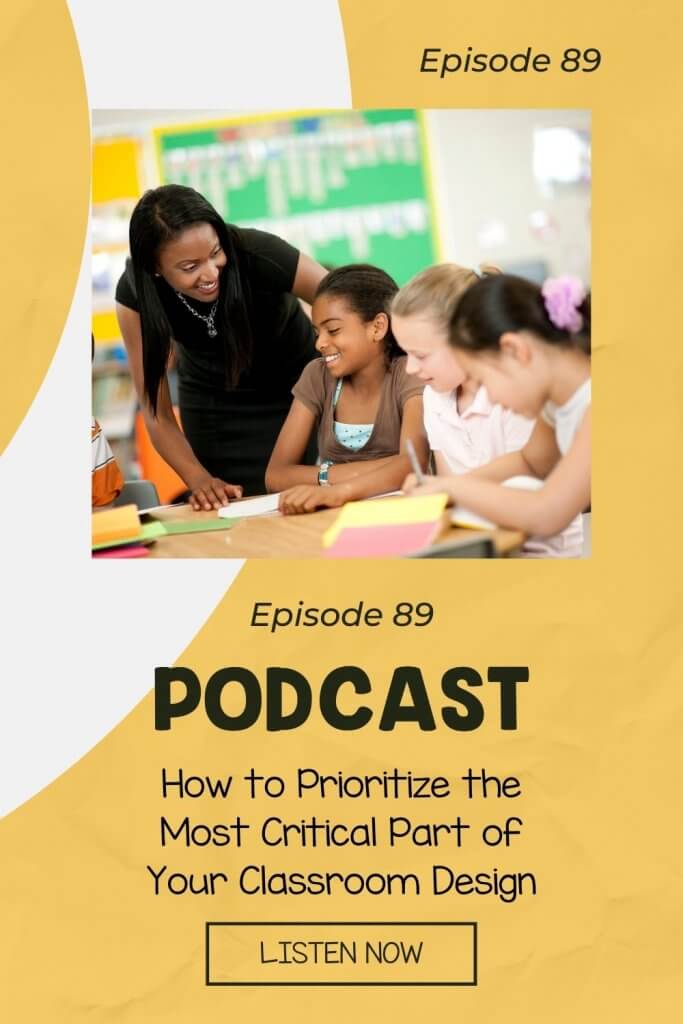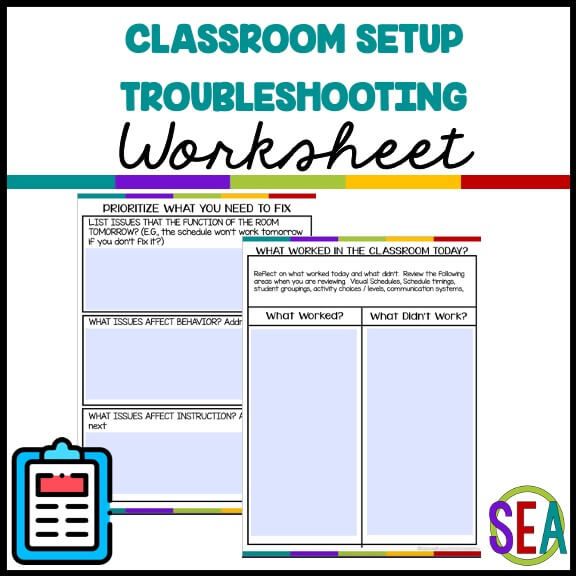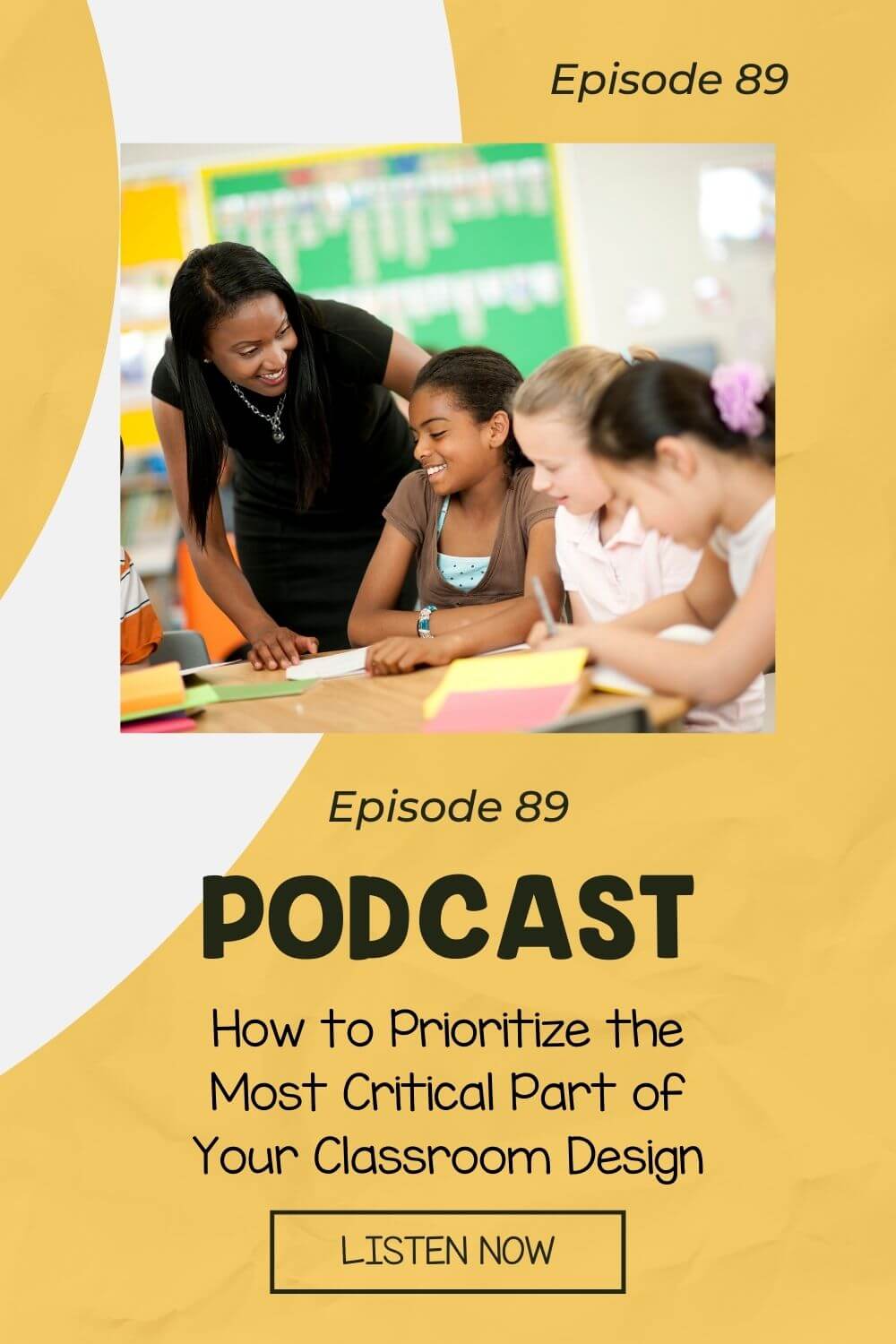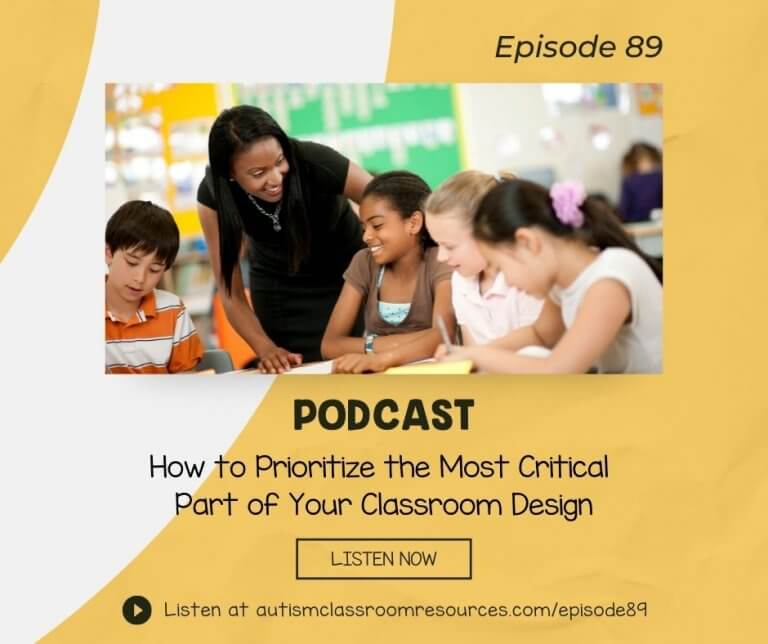Welcome to the Autism Classroom Resources Podcast, the podcast for special educators who are looking for personal and professional development.
Christine Reeve: I’m your host, Dr. Christine Reeve. For more than 20 years, I’ve worn lots of hats in special education but my real love is helping special educators like you. This podcast will give you tips and ways to implement research-based practices in a practical way in your classroom to make your job easier and more effective.
Welcome back to the Autism Classroom Resources Podcast. I’m Christine Reeve and I’m your host. I’m so glad you’re joining us as we’re talking about setting up systems in the classroom to make it run automagically, and to create a highly engaging environment for your students. In this series, we talked about the CORE model of highly engaged classrooms. If you’ve missed how we got there, I highly recommend going back to Episode 80 at autismclassroomresources.com/episode80 and start from the beginning. That episode will tell you all about the CORE and get you started with the Teaching Implementation Plan where it all begins. These are definitely systems that build on each other so it does help to have that background.
Throughout the last nine episodes, we’ve essentially set up all the elements of the basic CORE that you need to get started to run the classroom in order to support instruction. That leads us to our most critical piece as we get started with our students; the troubleshooting process. All of our systems are going to need some tweaking as we start the year. That is my topic to kick off today and the next few episodes. I’ve got a free tool for you in the post for this episode and I’m going to outline a system to help prioritize the troubleshooting process to keep it from being overwhelming. Let’s get started.
All of the systems I’ve talked about thus far, the TIP, the schedule, the physical design of the classroom, the zoning plan, the lesson plans, and the data collection systems, all need tweaking once they are set up. We set them up with what we know and we’ll need to tweak them as we actually use them and as we get to know the students. At the end of the day, in the first week of school, preferably with your team, I like to sit down and think about what worked and what didn’t. I usually keep a pad of paper in the center of the classroom throughout the day and as the day goes on, I add things to that list of what worked and what didn’t work during the day. I just make notes as we go along: something was out of place, I didn’t have something I needed, somebody wasn’t where they were supposed to be, there was a glitch in the schedule, things like that. Maybe it was the schedule, maybe it was part of the zoning plan, maybe there were visuals that students couldn’t use. I like to keep that there so we can jot things down as they go and then I use that as my jumping off point, so then at the end of the day, we sit down and we think about what worked and what didn’t.
Now if your team is not available at the end of the day, which I know is probably the case, you may be doing this by yourself. One thing that I suggest in that case is if your classroom team, your paraprofessionals, your related service providers, are out the door and not part of that ability to do that, hand them post-it notes before they leave and ask them to write down one thing that worked and one thing that didn’t work and stick them on the board before they leave, so that you are incorporating their observations into that. Because you can’t see everything that went on during the day and you need their feedback and they need to have a say in that as well. I think that there is value in that. It’s a way of getting their input. Maybe you use email, maybe you have a Google Doc that you send around, there’s other more technical ways of doing it. Sometimes I just find that low tech is the easiest.
Once you’ve really sat down and made that list—and I actually have a form, I like forms sometimes. Sometimes I find the forms can help organize so I have a free form for you in the Resource Library. You can find it in the blog post for this episode and I’ll tell you how to find that at the end of the episode—but it basically just goes through some of the common things and some of the common things you want to look at, the schedule, the zoning plan, and things like that, and it talks about what worked, it has a place to write in, what worked and what didn’t work.
Once you’ve hashed out what worked and what didn’t work and you have your list, then you can start to prioritize what you’re going to fix. Because trust me, you cannot fix everything all at the same time and your list of what didn’t work will most likely be longer than the amount of time you have to fix things. You will kill yourself if you try to fix everything that needs to be fixed. You do not need to stay there all night long fixing those things. Particularly after the first day of school, not everything has to be fixed immediately. Your classroom will never be perfect. I feel the need to say that again, your classroom will never be perfect. You will have no energy to run your classroom if you try to make it perfect. There are no perfect classrooms.
The first rule in prioritizing what to fix is function over form. Things don’t have to be pretty, they have to work. Yes, I know it’s really tempting, we see all those amazing classrooms on Pinterest and on Instagram, and I know because I have tons of pictures that I’ve taken of demonstration classrooms. If you look at the pictures on my blog, you typically don’t see pretty pictures, you see functional pictures. I’m reposting the secondary classroom pictures recently and I was like, “These are not pretty pictures.” They’re real pictures. I can’t figure out sometimes why they never look pretty and then I realized why. Even though I know that I’m taking pictures for presentations, I’m either taking pictures of working classrooms that are working at that moment, of other people’s classrooms or I’m designing a classroom that has to run the next morning and I’m not putting on a show. I’m not doing a magazine shoot. I like to sleep at least a little every night. What matters in a classroom is whether something works. If I’m setting up a classroom, I did it in three days and then we’re running it on Thursday. What matters is what works, whether it looks nice is gravy. There’s time for that later.
The next rule for prioritizing is what impacts behavior because challenging behavior is typically the thing that’s going to most derail your day. The elements of the day that are triggering or causing that are the things that you would prioritize next. Those are the next things that you need to fix; the things that aren’t working, my schedule’s not working, there’s too much time in this activity. My zoning plan isn’t working. People aren’t where they need to be. You gotta fix that. Those are the things you fix first. The next thing are the things that are setting off challenging behaviors, those are the next things that you fix. Then we look at issues like what’s affecting instruction, communication? What things are affecting training? Those kinds of things. What just isn’t working, we need to clean up.
In my next few episodes, I’m actually going to focus on warning signs that tell you that you should fix specific things. I’ll be talking about things that are happening that means, say, you should fix the physical environment and how to fix it. Things that mean that you should fix the zoning plan and how to fix it. There’ll be shorter episodes as well because I know that we’re really in the thick of getting the gear started. My hope is that they will be bite-sized chunks to solve specific problems. They will be warning signs that you will know to look for to allow you to solve and figure out what to do about them.
For right now, make sure you hop over to the blog post at autismclassroomresources.com/episode89 and grab the free worksheet to help you record the things that are working and are not working. I forgot to mention, one of the advantages of having your staff share what’s working and what’s not working is that by having them identify things that are working, you might be surprised that the things that they didn’t want to do, they found actually worked for them. Sometimes that’s just verifying for you a little bit. The worksheet comes from the setting up classes course that was developed for the Special Educator Academy. If you’re looking for more help with what to do with your classroom, I highly recommend our setting up classrooms course. You can come get a seven-day free trial at specialeducatoracademy.com. I would love to hear your questions about setting up classrooms, so feel free to come and join our free Facebook group at specialeducatorsconnection.com. If you’re a special educator, answer the three questions and we will get you in to ask your questions.
Thank you so much for tuning in. I hope that you’ll come back next week when I will be starting that series of short bite-sized episodes of warning signs that indicate changes are needed for specific systems. Next week I’ll actually be talking about warning signs that you need to fix the design of your physical space. Until then, I’ll just be over here making a list of what’s working and what’s not for everything. Have a good week.










